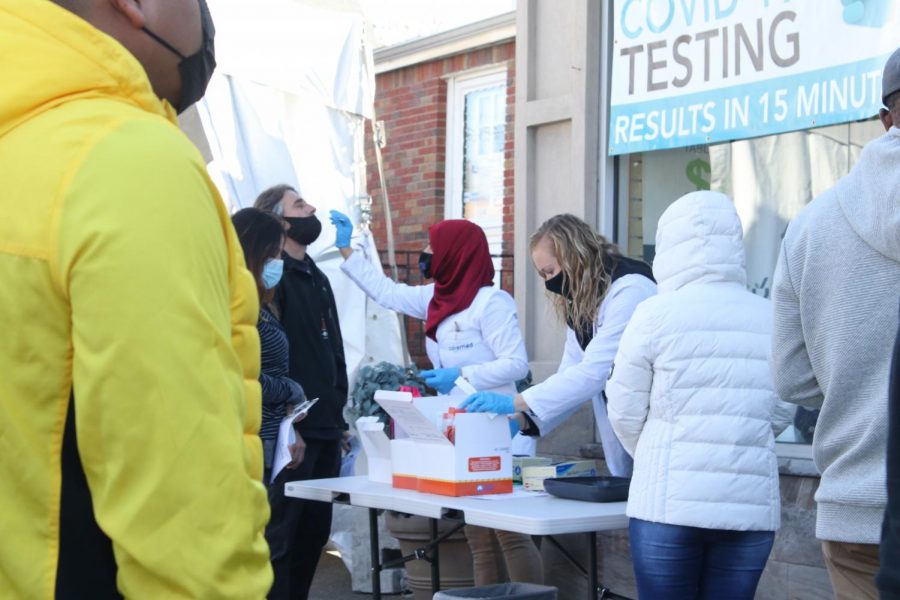Why Black Individuals are at a Severely Increased Risk of Contracting COVID-19
COVID-19 testing is another stark reality for us as we continue to live our lives and try to revert back to some form of ‘normal.’
The COVID-19 pandemic which hit America and the rest of the world back in March 2020 is now showing a disturbing rise in cases as the holidays are finished; America is now averaging over 208,000 new infections a day, the highest number of COVID-19 infections yet recorded. Tragically, COVID-19 has been affecting Black, Indigenous, and People of Color (BIPOC) communities the most. Though there are signs of progress in defeating COVID-19, such as the FDA issuing emergency use authorization for Pfizer’s Covid-19 vaccine followed by their emergency approval of the Moderna vaccine, we need to keep vulnerable populations in mind.
Multiple analyses of federal, state, and local data all share the same message: people of color are disproportionately shown in COVID-19 cases and deaths. According to The COVID Tracking Project, Black people are dying at 1.9 times the rate of White people nationwide. If we were to adjust the mortality data from the tracking project to the rate at which White people are dying, we would find that around 19,500 Black, 8,400 Latinx, 600 Indigenous, and 70 more Pacific Islanders would be alive right now. Despite inaccuracies in the data due to some states not reporting the race and ethnicity of their cases, the difference in mortality rates shows how hard some communities are being affected compared to others.
Data from the Center for Disease Control (CDC), shows that non-Hispanic Black Americans are about 3.3 times more likely than non-Hispanic White Americans to be hospitalized with COVID-19. Additionally, according to the Centers for Medicare & Medicaid Services (CMS), Black Americans enrolled in Medicare were hospitalized with COVID-19 at rates nearly four times higher than their White counterparts.
The data “confirms long understood and stubbornly persistent disparities in health outcomes for racial and ethnic minority groups,” said CMS Administrator Seema Verma.
So why is there this racial disparity in the first place?
While some may say that genetics contribute to the disparities, there is currently no scientific evidence that people of color have genetic or other biological factors that make them more likely to be affected by COVID-19. A likely reason is that it is often difficult for BIPOC communities to remain safe. Social distancing is one of the many terms we have heard in order to stop the spread of the Coronavirus, since it mainly spreads from person to person. However, many BIPOC communities cannot practice social distancing because they may live in crowded conditions with sometimes multiple generations or families. Increased unemployment rates in 2020 may also contribute to eviction and eventually homelessness of individuals.
BIPOC makes up the majority of essential workers, who are more likely to contract the Coronavirus because they work in frontline sectors that have close contact with the public or other workers, are not able to work from home, and do not have paid sick days.
Educational, wealth, and income gaps are another factor. Inequalities in accessing higher education lead to people relying on lower-paying and less stable jobs. Black workers are far more likely to be unemployed at any education level compared to White workers. BIPOC are more dependent on public transportation because they live in areas with fewer resources, such as grocery stores, that are available for them to be able to stock up on supplies during the pandemic. Many Indigenous reservations are often overlooked and often do not have access to clean water to be able to properly sanitize against COVID-19 transmission.
“These communities frequently lack the political influence of wealthier white communities and are therefore more likely to suffer the health effects of environmental pollution,” said New York State Assemblyman Edward C. Braunstein.
Furthermore, inequalities that existed within the healthcare system before the Coronavirus pandemic have only worsened. Communities with a majority of Black and Latinx individuals have less access to primary care physicians and are more likely to be uninsured than non-Hispanic Whites. Other factors that could contribute to healthcare access could be lack of transportation, child care, time off from work, and language barriers. Some BIPOC may be hesitant to seek healthcare treatment due to previous mistrust of the government for different reasons, like immigration issues. When we look at COVID-19 testing, testing sites in many non-white areas face greater demand but are scarce and understaffed.
It is not surprising that within this troubled time there is also racial disparity. Congress recently negotiated the next COVID-19 stimulus package, which could allow for free testing and treatment in BIPOC communities, improve racial data collection, and provide funding for research regarding health disparities. New York State Assemblyman Jeffrey Dinowitz, who is supporting a bill, A01148, to address inequities, noted that specifically in New York, “A01148 would mandate that every hospital in New York work with their local community board to ensure effective service. A01214 which would allow employees to use their sick time to care for immediate family members, household members, and domestic partners. I am also a proud co-sponsor of the New York Health act, which would replace private insurance with state-sponsored healthcare. This new system would ensure that no New Yorker has to choose between paying rent and paying for their doctor,” Dinowitz said.
It is essential that we start focusing on prioritizing these vulnerable populations to prevent increasing death rates.
“These communities frequently lack the political influence of wealthier white communities and are therefore more likely to suffer the health effects of environmental pollution,” said New York State Assemblyman Edward C. Braunstein.
Jessica Zheng is a Features Section Editor for 'The Science Survey.' She is passionate about reporting on current events that affect the general population...

